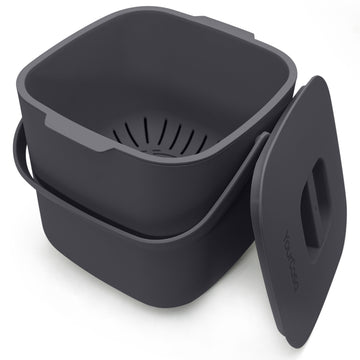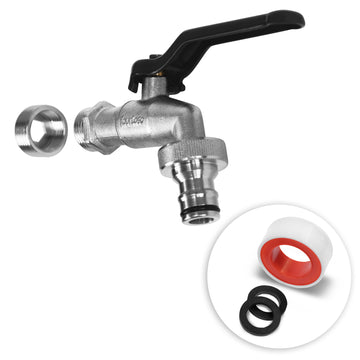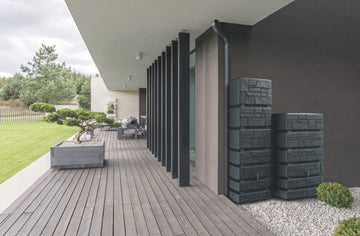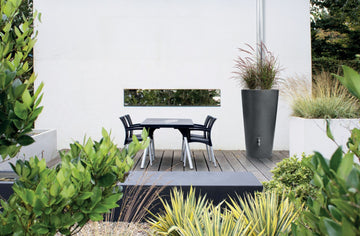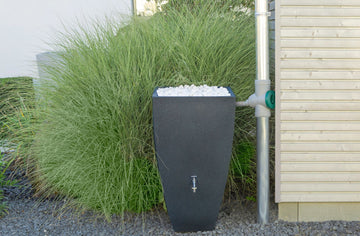
We live in a time in which sustainability and resource conservation are becoming increasingly important - this also applies to water. Water scarcity is an issue that is becoming increasingly present in people's minds and in the media. And rightly so. Because water is one of, if not the most important resource on our planet. Without it, no life would be possible.
This makes it all the more important that everyone does their part – and you can do that quite easily too. By watering your garden with rainwater .
What is garden irrigation with rainwater? Garden irrigation with rainwater refers to the collection and use of rainwater to irrigate plants and green spaces. Rainwater is collected in containers such as rain barrels and used to irrigate the garden when needed. This way you reduce the use of drinking water, conserve natural resources and irrigate your garden in an ecologically sustainable way.
We will explain to you how you can use rainwater for irrigation in your garden.
Introduction to rainwater harvesting in the garden
Do you want to take a simple but effective step towards an environmentally conscious lifestyle ? Then you should start by reducing your drinking water consumption. This is easier than you might think.
With rain barrels from YourCasa you can collect and store rainwater that would otherwise simply seep into the ground. You can then use it to water your garden.
Setting up such a rainwater collection system is very straightforward and you can even do it yourself - hiring a professional is usually not necessary. In addition, such systems can be adapted to any garden in terms of size, materials and design. You will find a large selection at YourCasa.
By using more rainwater in your garden and household, you are choosing a natural and free resource instead of precious drinking water.
Advantages of rainwater over tap water
As already mentioned, using rainwater instead of tap water offers numerous advantages for you, your garden and the environment. You can read what these are in detail in the following table:
| Advantage | Description |
| Environmentally friendly | Rainwater is a renewable resource whose use reduces the burden on waterworks and groundwater reserves. |
| Cost-efficient | There are no costs for using rainwater. For you, this means that your water bill will be significantly lower in the future. |
| Better for plants | Rainwater is soft and free of chlorine, lime and other chemicals that can be found in tap water. This is good for the plants in your garden and promotes healthier plant growth. |
| Reduces soil salinization | Using hard tap water in the garden can cause salts to build up in the soil – you can avoid this by using soft rainwater. |
| Avoiding water stress | If you collect rainwater, you can use it during dry periods and relieve the strain on the local water supply system. This helps prevent so-calleddrought stress . |
Choosing the right rain barrel
Before you worry about the details of setting up your water collection system, you should start with one of the simpler steps: choosing the right rain barrel . The only tricky part is choosing the right barrel for your individual purposes from the large selection available at YourCasa. We'll show you what's important:
| Selection criteria | Influencing factors |
| Size of the rain barrel | Amount of precipitation, size of the garden, roof area for water collection |
| material | Climatic conditions, aesthetics, durability, environmental compatibility |
| Design and aesthetics | Personal taste, garden style, visibility in the garden |
| Connection options | Existing downpipes, need for overflow systems, irrigation systems |
| Storage capacity and efficiency | Frequency and duration of dry periods, water consumption |
| Price | Budget, long-term cost-benefit considerations |
| Additional features | Integrated water filter, water level indicator, overflow protection |
| Environmental compatibility and sustainability | Recyclability of the material, CO₂ footprint of production |
At YourCasa you will find a huge selection of rain barrels in all imaginable sizes, made from different materials and with different features. For example, unlike rain barrels from other manufacturers, most models are equipped with a metal thread instead of a plastic one. This ensures less wear and a longer lifespan. An example of this is the YourCasa rain barrel 290 liters [Premium] .
Another practical feature is that the lids of some models, such as the YourCasa Rain Barrel 275 liters [SquareLux Rain] , can be planted, allowing you to give your garden an additional green touch.
Is your space in the garden limited? Then you can, for example, opt for the narrow and square YourCasa rain barrel 230 liters [Slimline Nordic] , which doesn't take up quite as much space as other variants.
As you can see, at YourCasa you can choose between many different models with very practical features. Which one you ultimately choose depends on you and your individual needs.
Planning and setting up the irrigation system
As soon as you have decided on a rain barrel from YourCasa and have the necessary equipment on hand, you can start setting up your irrigation system . We explain exactly how to do this in our step-by-step instructions:
- Analyze water requirements: First, take a close look at your garden . How big is your garden? How much rainfall does it have? Which plants need how much water? Where do brown patches appear more often in the lawn? Where does the sun shine the most?
- Buy a rain barrel: Based on these factors and the amount of water you expect to collect, you should choose your rain barrel from YourCasa.
- Choose a location: Determine a location for your rain barrel . Ideally, you should place the barrel under a downpipe to effectively collect the water that collects on the roof and in the gutters.
- Installation: Place the rain barrel under the downpipe, install any filters and install an overflow system if necessary .
- Connect an irrigation system: Connect the rain barrel to an irrigation system. This could be a drip hose , a sprinkler system or – the classic – a garden hose.
Setting up an irrigation system in your own garden is not rocket science. In most cases, professional help is not necessary - unless, for example, you need to install gutters. Otherwise, you can do all the steps yourself. Some steps, such as installing the irrigation system, require a bit of work, but are by no means complicated.

Maintenance and care of the system
But installing the irrigation system is not enough. To ensure that it works smoothly for as long as possible, you should maintain and care for your system regularly . You can read how to do this here:
| Maintenance and care tasks | frequency | How it works |
| Cleaning the rain barrel | Yearly | Empty the bin, remove mud and debris and rinse with water. |
| Checking the filters | Half-yearly | Check the filters for dirt and blockages and clean or replace them if necessary. |
| Checking the connections | Yearly | Check all connections for leaks and tightness and tighten any loose parts. |
| Inspection of the overflow system | Yearly | Make sure the overflow system is free of blockages and working effectively. |
| Emptying before frost | Before the first frost | Empty the barrel to avoid damage from freezing water. |
| Cleaning the gutters | Half-yearly | Clean the gutters to ensure optimal water flow to the rain barrel. |
Legal provisions
From a legal point of view, there is little to consider when collecting rainwater. In principle, it is permitted. However, when rainwater seeps into a property, a precipitation fee is charged , which is based on the sealed area of your property. This fee helps finance the costs of the public sewer system and sewage treatment plants.
There is also the Water Resources Act . This regulates the use and drainage of surface water. The law stipulates that rainwater and wastewater must be collected separately. Please observe the local regulations in your area - especially with regard to new buildings.

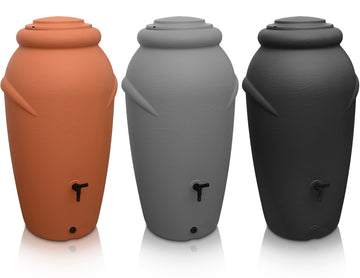
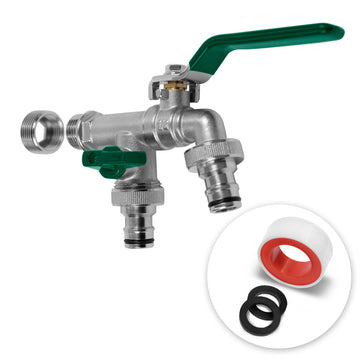
![Drei hohe YourCasa Regentonne 240 Liter [Wellen-Design] - Frostsicher & UV-beständige Gartentöpfe in den Farben Schwarz, Grau und Terrakotta, jeweils mit Drainagesystem für nachhaltige Bewässerung.](http://yourcasa.de/cdn/shop/files/ohnelogo_b8aeecac-557e-4106-a999-e77dcd160209.jpg?v=1707130230&width=360)
